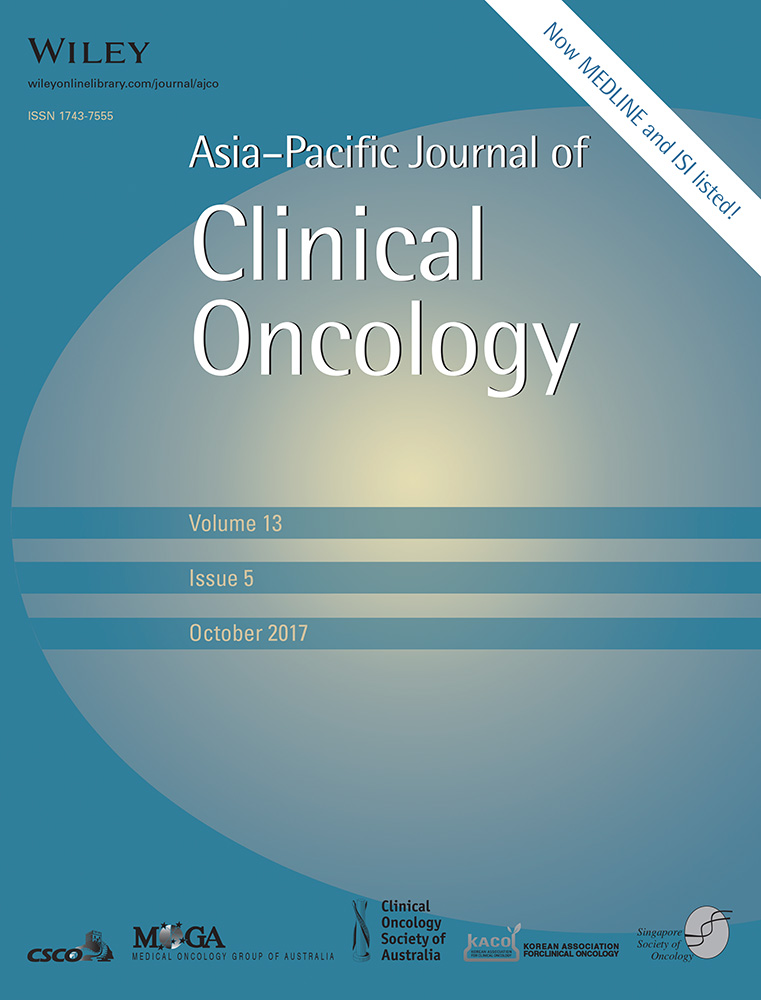Treatment interruption during radiation therapy: Experience at a single institution in the Republic of Korea
Abstract
Aim
Our study analyzed the frequency and causes of treatment interruption among patients undergoing radiation therapy (RT).
Methods
A total of 1637 RT courses in 1500 patients were reviewed from September 2009 to October 2013. A continuous break over 7 days or a discontinuous break over 14 days was regarded as a temporary break and RT under 80% of planned treatment was regarded as incomplete.
Results
Two-hundred and twenty courses (13.4%) with treatment interruption were identified. Half of the patients received RT with a definitive aim, and the other half for palliative care. Completion after temporary break, near completion and incompletion were noticed in 12.3%, 21.3%, and 66.4% of cases, respectively. Among patients with a definite aim, thorax (19.2%) and abdomen (16.3%) had a higher interruption rate. For brain and bone with a palliative aim, the frequency of interruption was about 16%. Old age and worse performance negatively affected interruption. The most common cause of treatment interruption was cancer progression including death (30%) and the next was treatment-related side effects (23.1%).
Conclusion
About 13% of RT cases were interrupted. Two third of patients received less than 80% of the planned RT. To improve RT completion rate, multidirectional efforts are needed.




